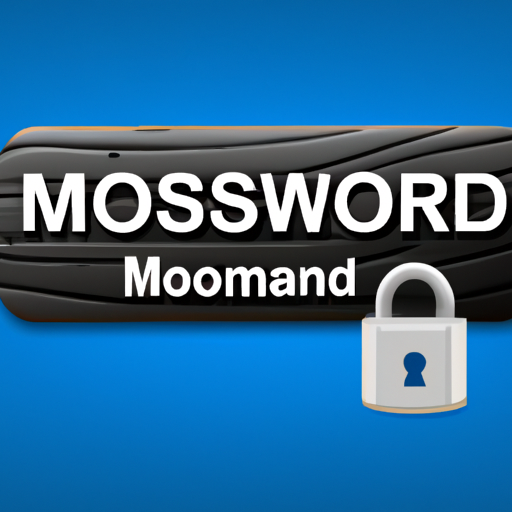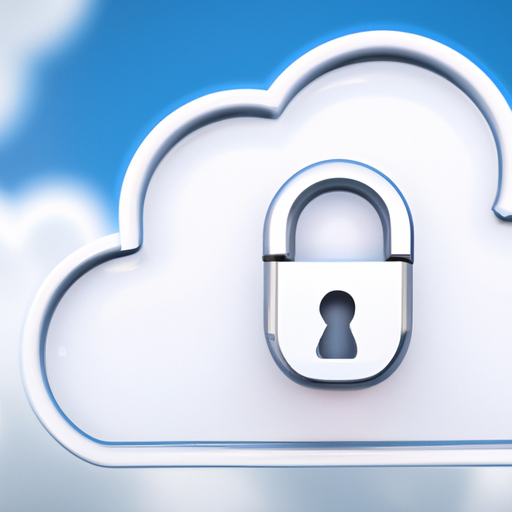-
Table of Contents
“Secure your passwords, secure your future.”
Introduction
Password management and protection is an important part of keeping your online accounts secure. With the increasing number of online accounts and services, it is essential to have a secure and reliable way to store and manage your passwords. Password management and protection can help you create strong passwords, store them securely, and protect them from unauthorized access. It can also help you keep track of multiple passwords and ensure that you are using different passwords for different accounts. By taking the time to properly manage and protect your passwords, you can help protect yourself from identity theft and other online security threats.
How to Protect Your Passwords from Hackers
Protecting your passwords from hackers is essential in today’s digital world. Here are some tips to help you keep your passwords safe and secure:
1. Use strong passwords. A strong password should be at least 8 characters long and include a combination of upper and lowercase letters, numbers, and symbols. Avoid using common words or phrases, and don’t use the same password for multiple accounts.
2. Don’t share your passwords. It’s important to keep your passwords to yourself. Don’t share them with anyone, even if they claim to be from a legitimate company.
3. Use two-factor authentication. Two-factor authentication adds an extra layer of security to your accounts by requiring you to enter a code sent to your phone or email address in addition to your password.
4. Use a password manager. Password managers can help you create and store strong passwords for all of your accounts. They also make it easier to change your passwords regularly.
5. Be aware of phishing scams. Phishing scams are attempts to get you to reveal your passwords or other sensitive information. Be wary of emails or links that ask you to enter your password or other personal information.
By following these tips, you can help protect your passwords from hackers and keep your accounts secure.
Best Practices for Password Protection
Good password protection is essential for keeping your data and accounts secure. Here are some best practices to help you create strong passwords and keep them safe:
1. Use a combination of letters, numbers, and symbols. A strong password should include a combination of upper and lowercase letters, numbers, and symbols. Avoid using common words or phrases, as these can be easily guessed.
2. Make your passwords long. The longer your password is, the harder it is to guess. Aim for at least 12 characters, but the longer the better.
3. Don’t use the same password for multiple accounts. If one of your accounts is compromised, all of your accounts are at risk. Use a unique password for each account.
4. Don’t share your passwords. Never share your passwords with anyone, even if they claim to be from a legitimate company.
5. Use two-factor authentication. Two-factor authentication adds an extra layer of security to your accounts by requiring you to enter a code sent to your phone or email address in addition to your password.
6. Change your passwords regularly. It’s a good idea to change your passwords every few months to ensure they remain secure.
By following these best practices, you can help keep your data and accounts secure.
The Dangers of Reusing Passwords
Reusing passwords is a dangerous habit that can put your personal information at risk. It’s important to understand why reusing passwords is so dangerous and how to create strong, unique passwords for each of your accounts.
When you reuse passwords, you’re making it easier for hackers to gain access to your accounts. If a hacker is able to gain access to one of your accounts, they can use the same password to gain access to all of your other accounts. This means that all of your personal information, such as banking information, credit card numbers, and other sensitive data, is at risk.
Creating strong, unique passwords for each of your accounts is the best way to protect yourself from hackers. A strong password should be at least 8 characters long and include a combination of upper and lowercase letters, numbers, and symbols. Avoid using common words or phrases, as these can be easily guessed by hackers.
It’s also important to change your passwords regularly. This will help ensure that your accounts remain secure even if a hacker is able to gain access to one of your accounts.
Reusing passwords is a dangerous habit that can put your personal information at risk. By creating strong, unique passwords for each of your accounts and changing them regularly, you can help protect yourself from hackers and keep your data safe.
How to Create a Secure Password
Creating a secure password is an important step in protecting your online accounts and personal information. Here are some tips to help you create a strong and secure password:
1. Make it long: The longer your password is, the harder it is to guess. Aim for at least 12 characters, but the longer the better.
2. Use a mix of characters: Include a mix of upper and lowercase letters, numbers, and symbols.
3. Avoid common words: Don’t use words that can be found in the dictionary or that are related to you, such as your name, address, or birthdate.
4. Don’t use the same password for multiple accounts: If one of your accounts is compromised, all of your accounts are at risk.
5. Use a password manager: A password manager can help you create and store secure passwords for all of your accounts.
By following these tips, you can create a secure password that will help keep your accounts and personal information safe.
The Benefits of Using a Password Manager
Are you tired of trying to remember all of your passwords? Do you find yourself using the same password for multiple accounts? If so, it’s time to consider using a password manager. Password managers are a great way to keep your passwords secure and organized. Here are some of the benefits of using a password manager.
First, password managers make it easy to create and store strong passwords. Instead of having to come up with a unique password for each account, you can use the password manager to generate a secure password for you. This way, you don’t have to worry about forgetting your passwords or using the same one for multiple accounts.
Second, password managers can help you stay organized. Instead of having to remember all of your passwords, you can store them in one secure place. This makes it easy to find the password you need when you need it.
Third, password managers can help protect your accounts from hackers. By using a password manager, you can ensure that your passwords are encrypted and stored securely. This makes it much harder for hackers to gain access to your accounts.
Finally, password managers can help you save time. Instead of having to manually enter your passwords each time you log in, you can use the password manager to quickly and easily log in to your accounts.
As you can see, there are many benefits to using a password manager. If you’re looking for a way to keep your passwords secure and organized, a password manager is a great option.
Conclusion
Password management and protection is an important part of keeping your data and accounts secure. It is important to use strong passwords, change them regularly, and use different passwords for different accounts. Additionally, using a password manager can help you keep track of your passwords and ensure that they are secure. Finally, it is important to be aware of the potential risks associated with password management and protection, and to take steps to protect yourself from them.




